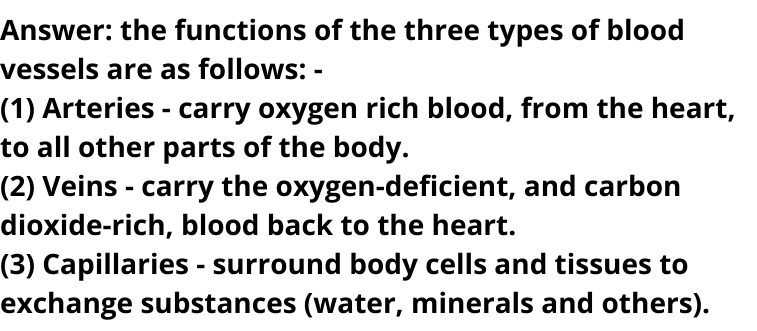DAV Class 7 Science Chapter 8 Solutions: Students who are looking for DAV Class 7 Science Book Solutions Chapter 8 Transportation in Plants and Animals then you are at right place. Here DAV school class seven Science book chapter 8 question answer is given below.
DAV Class 7 Science Chapter 8 Solutions
Highlights
- A. Fill in the blanks.
- B. True or False.
- C. Tick the correct option.
- D. Answer the following questions in brief.
- E. Answer the following questions.
A. Fill in the blanks.
1. Water and minerals are transported, to various parts of a plant, by a network of tubes, called the ___________.
2. ___________ is the respiratory carrier in blood.
3. The upper chambers of heart are known as ___________ while the lower chambers are known as ___________.
4. ___________ is the muscular wall that divides the heart length-wise.
5. Excretion, in unicellular plants and animals, takes place through ___________.
Answer: (1) xylem (2) Haemoglobin (3) atria, ventricles (4) Septum (5) diffusion
B. Write True or False for the following statements.
1. Phloem transports food, from the leaves, to the other parts of the plant.
2. Transpiration is harmful for the plants.
3. Oxygenated blood, from the lungs, flows into the left atrium and then to all other parts of the body.
4. Arteries carry the oxygen-deficient blood, back to the heart.
5. Platelets help in the clotting of blood.
6. The red colour of the blood is due to the presence of plasma.
7. Urine is passed out of the body through the urethra.
Answer: (1) True (2) False (3) True (4) False (5) True (6) False (7) True
C. Tick the correct option.
Answer:
1. diffusion
2. xylem
3. arteries
4. RBCs
5. urinary bladder
D. Answer the following questions in brief.
Q. 1. What will happen if the xylem tissue gets damaged in a branch of a tree?
Answer: If the xylem tissue gets damaged in a branch of a tree the transportation of materials such as water and minerals would not be possible there and that branch of tree would automatically die.
2. Define transpiration.
Answer: Transpiration is the evaporation of water molecules, in the form of water vapours from the plant surface, especially from the stomata on its leaves.
3. Name the three types of blood vessels.

4. State any two functions of the blood.
Answer: Two functions of the blood are as follows: –
(1) It helps to distribute the digested food to all parts of the body.
(2) Blood transports Oxygen and Carbon dioxide gas in the body.
5. Define the term ‘pulse rate!
Answer: Pulse rate is the number of times that our heart beats per minute.
E. Answer the following questions.
Q. 1. Briefly explain the transport of water and minerals in plants.
Answer: Plants obtain water and minerals from the soil with the help of their roots. The absorbed water and minerals are transported to the other parts of the plant by a network of tubes called xylem.
Q. 2. Describe, in brief, the function of heart.
Answer: Heart pumps blood to the different parts of the body. When the heart muscles contract, they squeeze the blood through the atria and then through the ventricles.
Oxygenated blood, from the lungs, flows into left atrium and then to all parts of the body.
Deoxygenated blood, returning from the body, flows into the right atrium and then to lungs for oxygenation.
Q. 3. State the functions of the three types of blood vessels.

Q. 4. Give one function each of RBC, WBC and platelets.
Answer: One function of RBC, WBC and platelets are as follows: –
RBC – Carry oxygen from the lungs.
WBC – Protect our body against infections.
Platelets – Help in clotting of blood.
Q. 5. Draw a neat and well labelled diagram of the human excretory system.
Answer: See page no. 123 of your book.

Well nice……
Very helpful for every DAV student
Very helpful